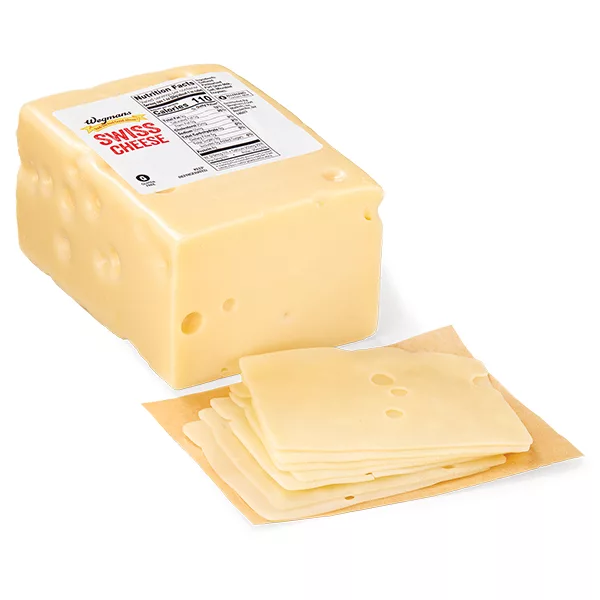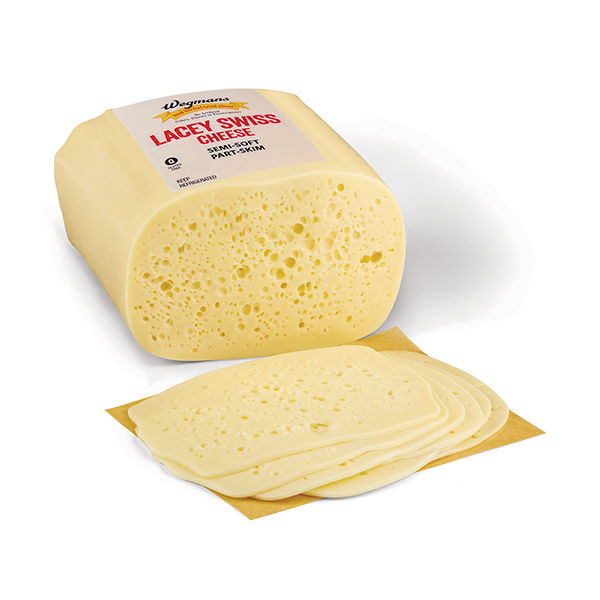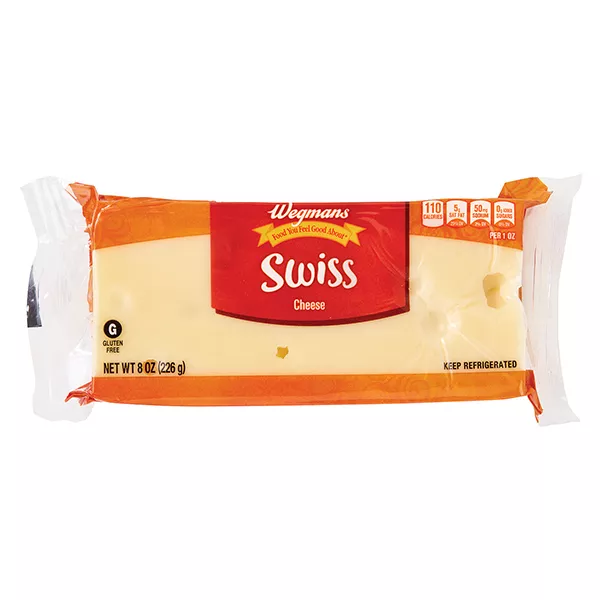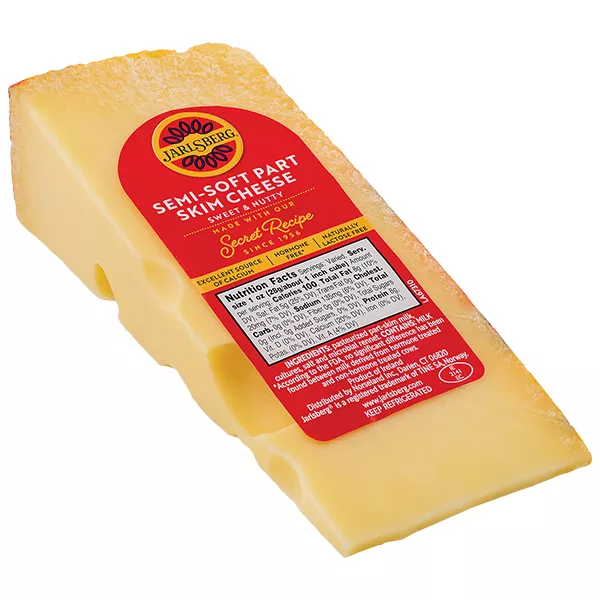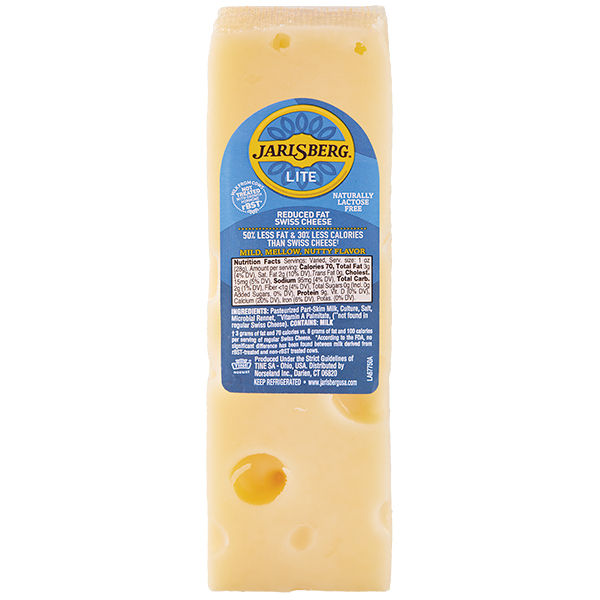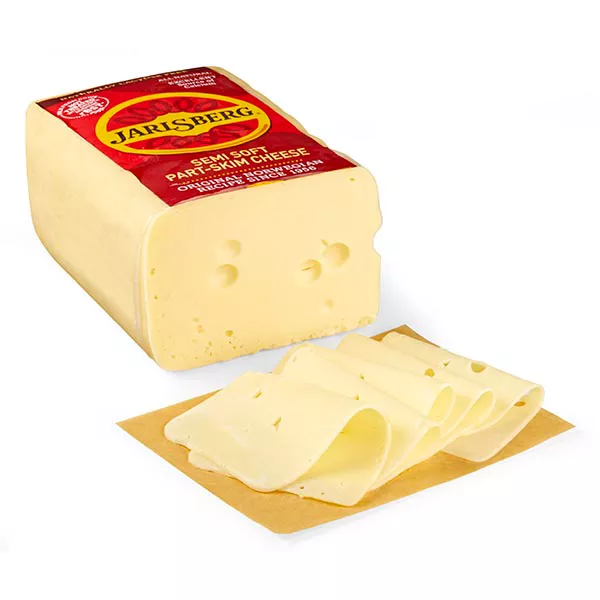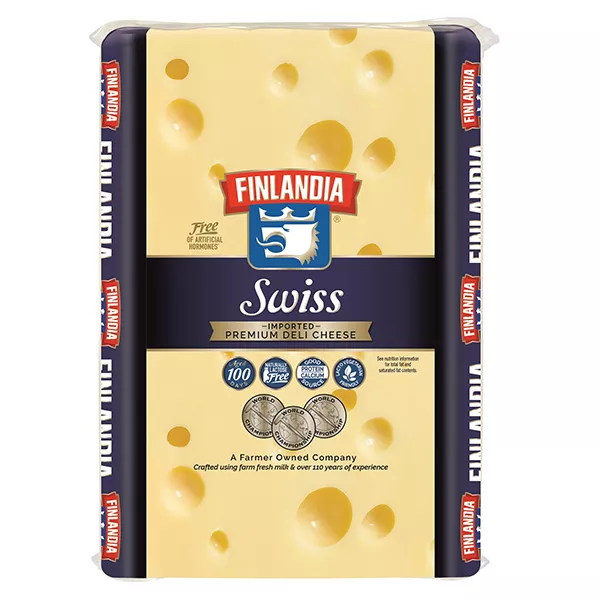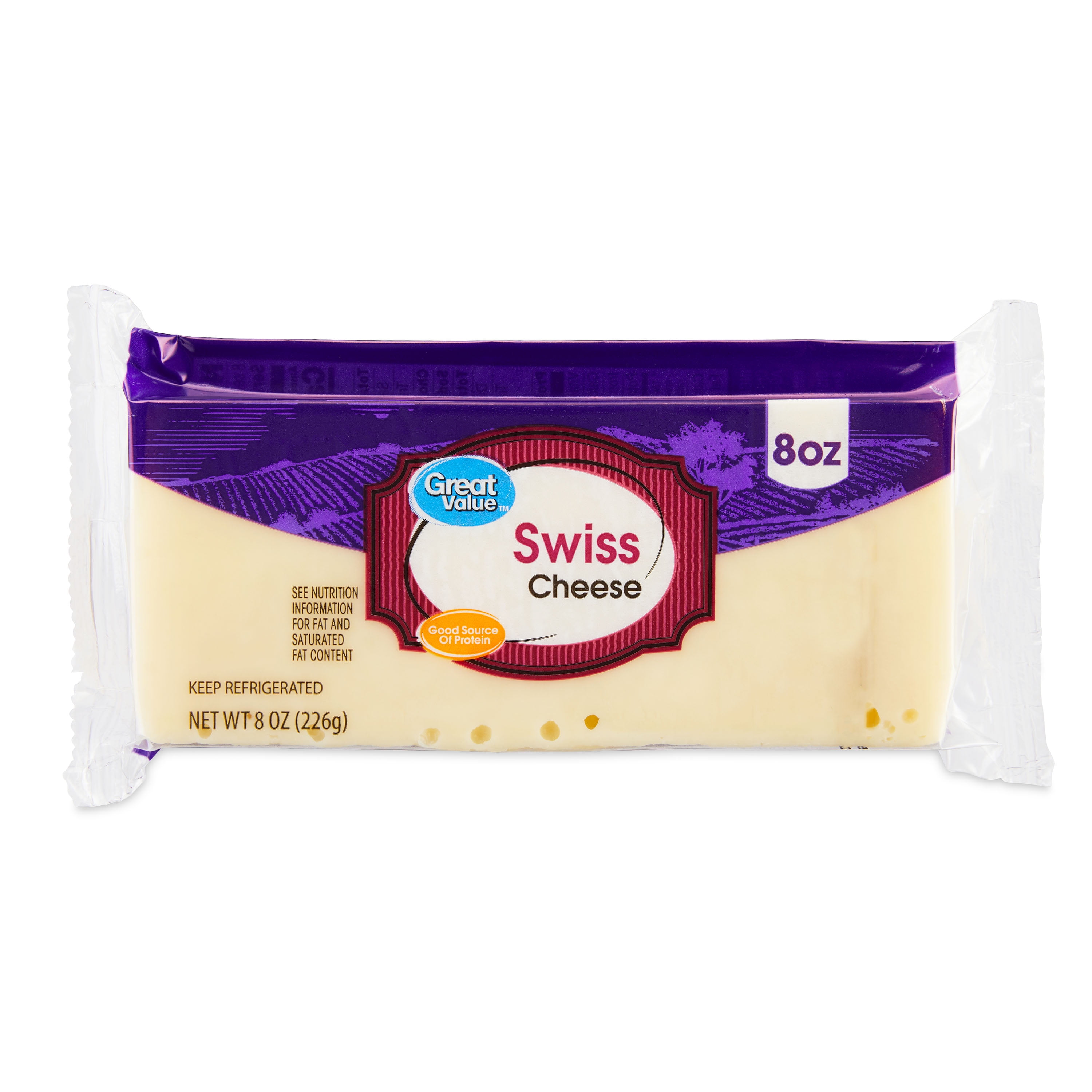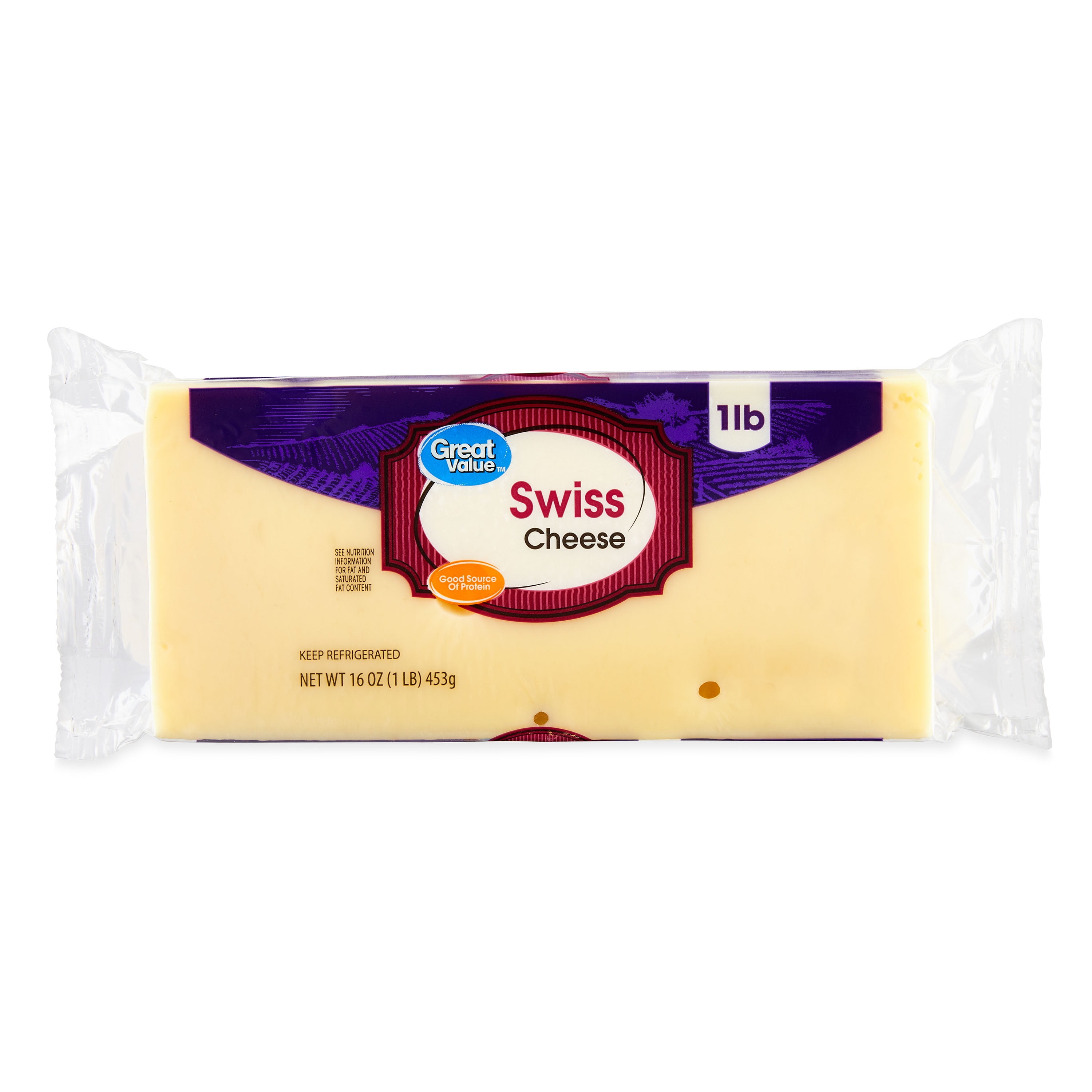Swiss Cheese
Swiss cheese, known for its distinctive holes and nutty flavor, originated in Switzerland but is now produced in various countries around the world. This semi-hard cheese is made from cow's milk and is typically aged for three to four months. The characteristic holes or "eyes" are a result of the fermentation process, during which bacteria produce carbon dioxide gas that becomes trapped within the cheese, creating the iconic pockets.
Swiss cheese is a versatile ingredient in a variety of recipes, from sandwiches and fondue to quiches and casseroles. Its smooth, melt-able texture and mild flavor make it easy to pair with a range of ingredients, offering numerous culinary opportunities. Enjoy Swiss cheese on its own or incorporated into your next culinary masterpiece.
99%
CARBS
1%
FAT
0%
PROTEIN
1,349 Swiss Cheese Products
Used In 77 Recipes
4
Creamy Dijon Chicken Cordon Bleu Bake
5
Cheesy Caramelized Onion Pork Chops
3
Creamy Chicken Cordon Bleu Pasta Bake
1
Swiss Cheese, Mushroom, and Caramelized Onion Stuffed Chicken Breasts
2
Delectable Cast Iron Patty Melt
4
Cheesy Chicken and Mushroom Bake
2
Pretzel Pub Burger Extravaganza
1
Sweet and Spicy Blackberry Bacon Melt
Swiss Cheese Is Frequently Used With
Swiss Cheese FAQ
Swiss cheese, characterized by its iconic 'holey' appearance and nutty taste is a user-friendly ingredient, able to be adapted for numerous dishes. Although it's generally easy to cook with, some people can struggle to achieve the desired texture, especially when melting. Also, its mild flavor might seem lacking to those used to stronger cheeses, leading to excessive usage which can overpower other ingredients in your dish. Therefore, it's best used in moderation. Another factor is the best way to utilize the holes, which are a unique feature of Swiss cheese.
To get the most out of Swiss cheese, ensure you experiment with its melting quality – make it a star in dishes like fondue, grilled sandwiches, or cheese-topped dishes that require baking. Those bubbles in the cheese aren't just for show either – they actually help distribute warmth more evenly when the cheese is melted. Furthermore, enjoy Swiss cheese cold, cut into cubes in salads for a nutty flavor twist.
Remember, the key to cooking with Swiss cheese is to let its distinctive, slight-sweet, slightly nutty flavor complement your dish, and not overpower it.
Does Swiss cheese go well with wine?
Should Swiss cheese be melted or can it be eaten as is?
Why does Swiss cheese have holes?
Is Swiss cheese mild or strong flavored?
Why isn't my Swiss cheese melting properly?
What dishes are Swiss cheese best for?
Does Swiss cheese work in desserts?
Why is my Swiss cheese sweating?
Is Swiss cheese healthier than other cheeses?
What's the best way to cut Swiss cheese?
Expiration & Storage Tips
When does swiss cheese expire?
Unopened Swiss cheese can last for 2-4 months from the printed date if refrigerated. Once opened, it generally stays good for 3-4 weeks if kept in the fridge. If you slice the cheese at home, aim to consume it within two weeks. On the other hand, when freezing Swiss cheese, it can retain its quality up to 6-8 months, but might experience changes in texture upon defrosting.
How do you tell if swiss cheese is bad?
The easiest way to tell if your Swiss cheese has gone bad is by looking at it and smelling it. If you see mold (in form of blue or green blotches) or if it has a sour or off smell then it's likely that the cheese has spoiled. Another sign of spoilage could be a change in color - if your cheese is turning yellowish or brownish, it might be time to toss it.
Tips for storing swiss cheese to extend shelf life
• Always store your Swiss cheese in the vegetable drawer of your fridge which maintains the right humidity levels.
• Keep it in a sealed plastic bag or cheese paper. Avoid cling wrap as it doesn't allow the cheese to breathe.
• If freezing, slice or grate the cheese before packaging to make it easier to use in future.
• Always handle cheese with clean hands or utensils to avoid contamination.
EXPIRES WITHIN
3 - 5
MONTHS
Substitutes

Shredded Swiss Cheese
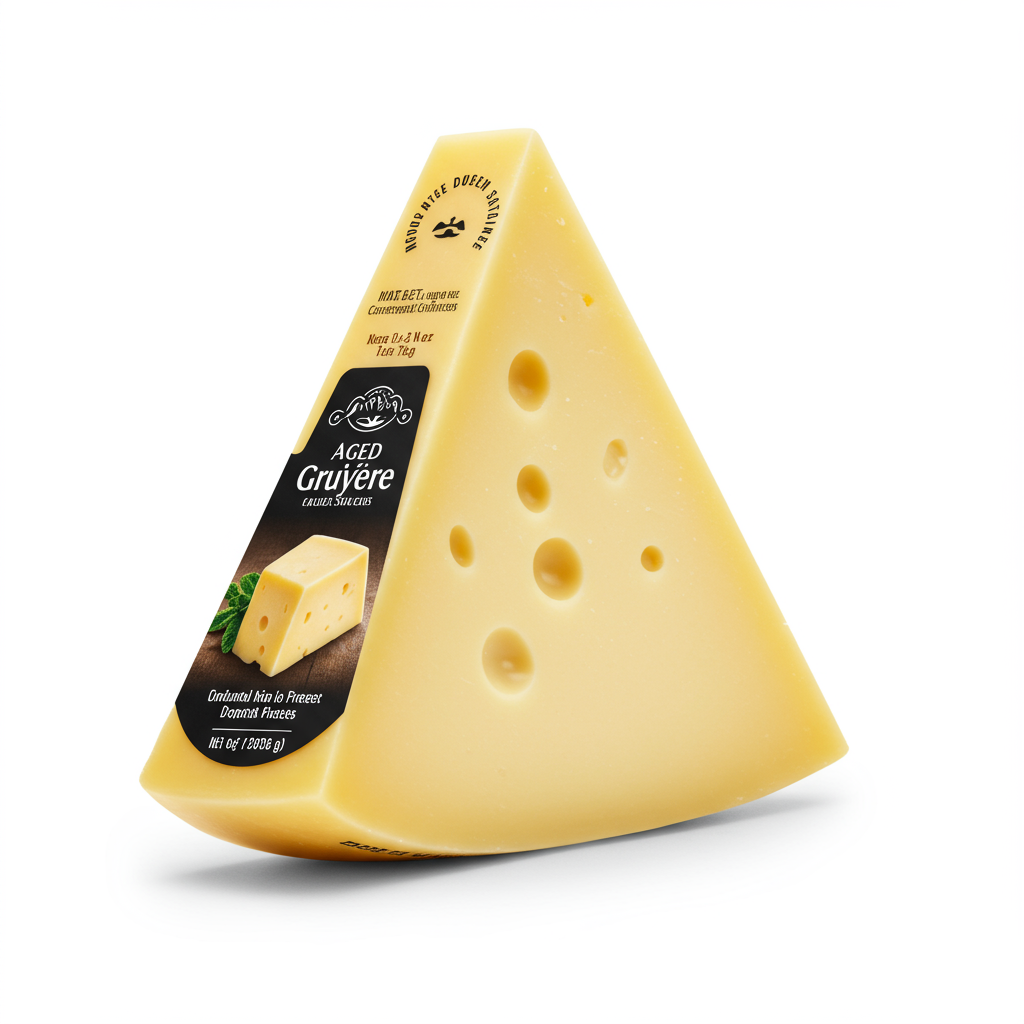
Aged Gruyere Cheese

Aged Medium Gruyere Cheese

Appenzeller Cheese
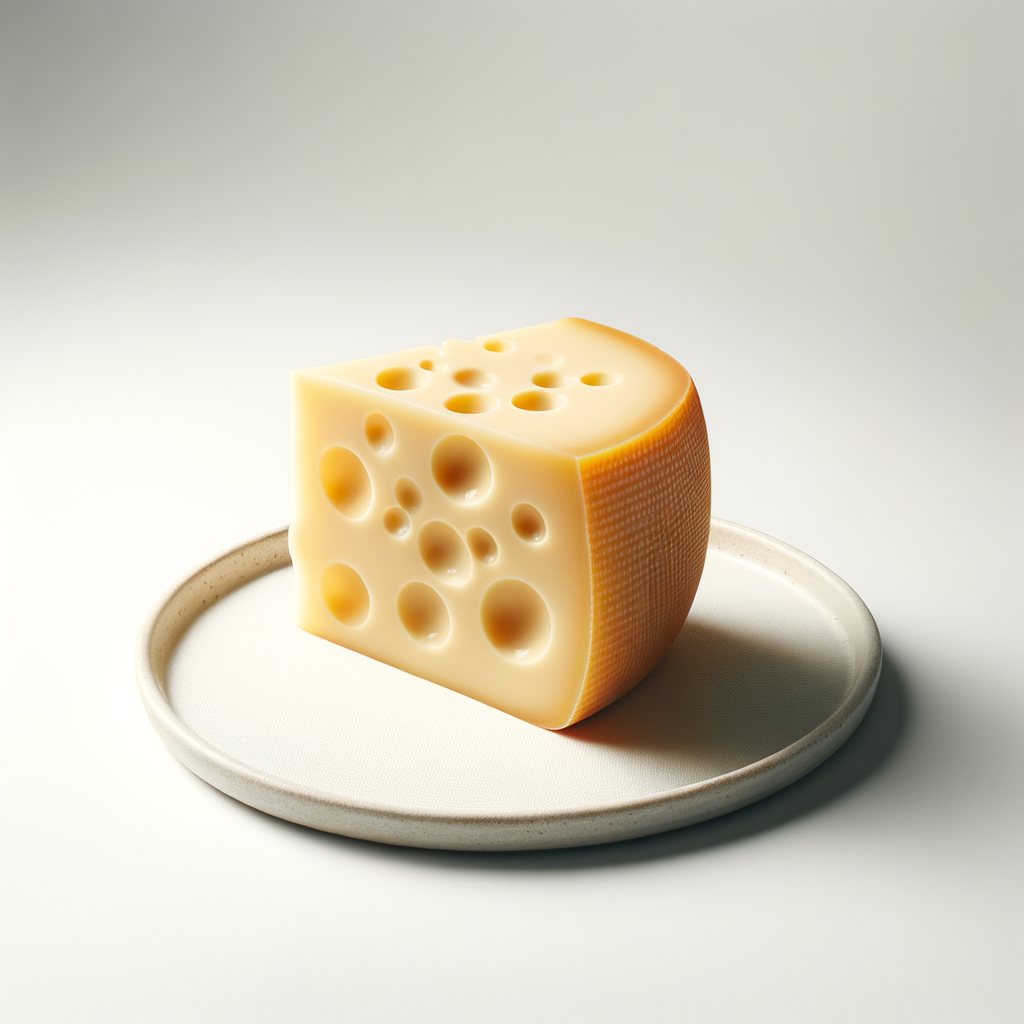
Emmental Cheese

Gruyere Cheese

Shredded Gruyere Cheese

Sliced Swiss Cheese

Alpine Cheese

Comte Cheese
See All
Health Info
Macros
13g
CARBS
0g
FAT
0g
PROTEIN
Allowed on these diets
LOW FAT
HIGH CALCIUM
VEGETARIAN
KETO
MEDITERRANEAN
LOW CARB
GLUTEN FREE
Contains these allergens
MILK

